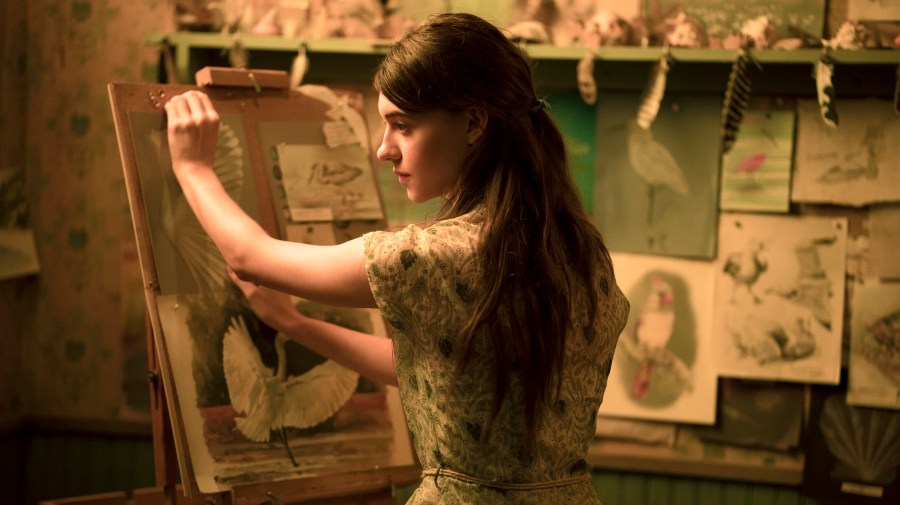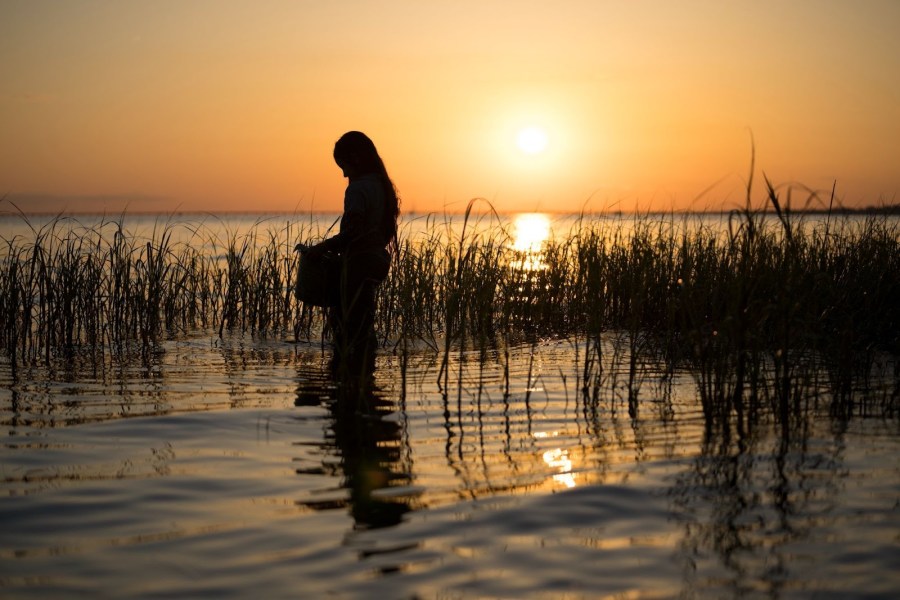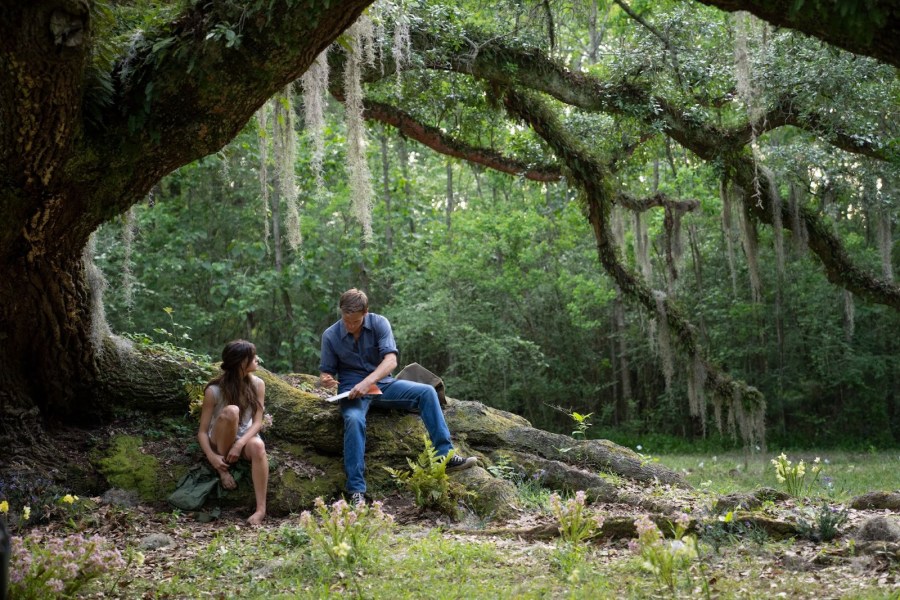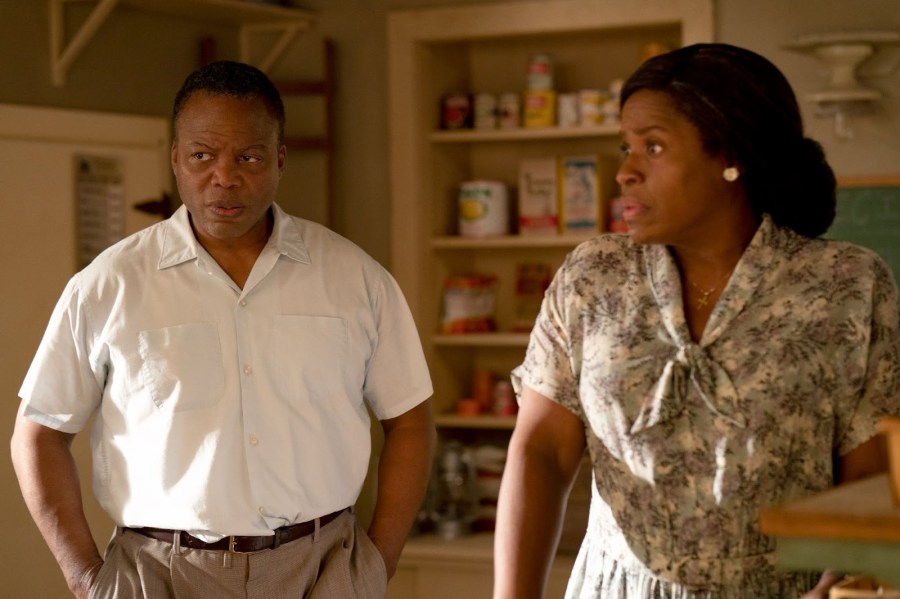
Rating: 6/10
As much as I tend to prefer books being adapted into miniseries instead of movies — it gives the filmmakers more time to include all the substantial parts and allows for the character development that TV, typically, does better — I feel a movie was the perfect format for this version of Delia Owens’ bestselling novel Where the Crawdads Sing. The film opens exclusively in theaters on July 15, and is directed by Olivia Newman and executive produced by Reese Witherspoon.
I loved Owens’ book — and I wasn’t alone, since its publication in 2018 it’s sold more than 12 million copies worldwide — yet having the story confined to the runtime of a movie allowed it to brush over some of the issues the novel had. The thing is, putting Where the Crawdads Sing into images and watching it on the big screen made me realize how Owens’ original story is quite the unlikely melodrama.
In Where the Crawdads Sing, Daisy Edgar-Jones (Normal People) plays Kya Clark. She lives alone in the North Carolina marshes after all her relatives deserted the family home when running away from an alcoholic and abusive father (Garret Dillahunt). The movie, similarly to the book, kicks off with Kya getting arrested in 1969 and charged with the death of Chase Andrews (Harris Dickinson). Her murder trial is interrupted by frequent flashbacks in which we see her growing up (Jojo Regina plays the younger Kya) into a teenager and then a young woman. And we learn how she got to be accused of murder in the first degree.

Even if Kya was mainly alone for most of her younger life, she became friends with the store owner Jumpin’ (Sterling Macer Jr.) and his wife Mabel (Michael Hyatt), who took care of her when everyone else shunned her. We also see more details surrounding her acquaintance with both Tate Walker (Taylor John Smith) and Chase.
I feel the movie trims exactly what needed to be trimmed from the book — namely, the poetry and certain details about the ending that make more sense in the film because less is said about it. The book managed to be three things in one though: a study on solitude, a romance, a courtroom drama. And I’m not sure if this film gets to completely be any one of those things.

Solitude is much easier to capture in the written form; the reader can simply dwell on the protagonist’s thoughts for hours. There’s a very romantic portion of the movie around its halfway point, where we see Kya enveloped by an almost magic whirlwind of leaves and sunlight during her first kiss, followed by an equally swoony underwater kiss. But there’s so much plot to get to that the romance has to be dealt with quickly, so that we can move on to the next bit.
But the trial portion felt rushed too. And I wonder if this movie would have worked better if, instead of trying to be all three things the book embodies, it had stuck to a more traditional courtroom drama structure and given us more details about the who-killed-Chase-Evans aspects of it all. David Strathairn plays Tom Milton, Kya’s veteran and experienced lawyer, and he actually has a more fleshed-out role here than in the book. So it almost feels like a missed opportunity not to have delved more into the legal drama aspects of this story.
I attribute Where the Crawdads Sing’s flaws to the same storyline problems the book already had. Jumpin’ and Mabel, for instance, are but a cliché of nice Black people who are in the story solely to help a white character. They’re critical in Kya’s life and development, yet we don’t know that much about them. Kya doesn’t get to go to school and only learns how to read in her teenage years; despite being mainly self-taught, she’s capable of understanding and explaining the physics behind why the sky is blue. Not to talk about the fact that she’s put together in an unlikely way given her situation — she’s all perfect naked makeup, immaculate and straight white teeth and the kind of “natural” hair that, in reality, takes time and effort.

The very unsubtle use of CGI and prosthetics makeup don’t help the movie’s credibility either. Every time I spotted a digital seagull, it took me out of the movie — instead of accomplishing its intended purpose of showing me the magic of the marsh and the richness of its landscapes and species. “Marsh is not swamp. Marsh is a space of light, where grass grows in water, and water flows into the sky,” Owens writes at the beginning of her novel. The film tries — and fails — to capture that essence through CGI and Kya’s voiceover.
But even though this movie made me realize the book’s many imperfections — as well as its own — I would probably watch it again. In a way, it reminded me of the 1990s big romantic melodrama movies — like Legends of the Fall (1994), The English Patient (1996), The Cider House Rules (1999) — that don’t get made that often these days, and that I now realize, I was actually missing.






